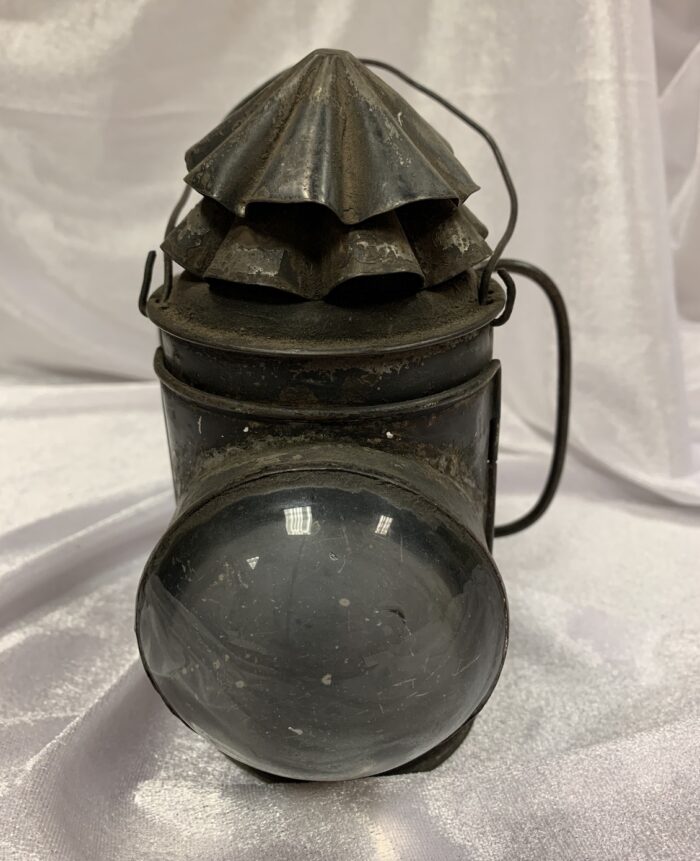Here is a dark lantern from the museum’s collection.
Dark lanterns were standard equipment for watchmen, military and police in the late 1800s.
While regular lanterns shed light from the time they are lit until they are extinguished, dark lanterns are made with doors and other devices to allow or block the shedding of light while remaining lit.
According to the Dark Lantern Tales website:
“Typical dark lanterns were about the size and shape of a small modern thermos bottle, and had a fount for oil in the bottom. A cap with a wick (or wicks) was mounted directly to the top of this reservoir, and in most models the cap also served as a port to fill it. In the cylindrical body of the lantern, a shutter could be rotated to block light from coming through a large “Bull’s Eye” lens on the front. At the top of the lantern was a vent that allowed exhaust from the flame to exit but retain the light. These distinctive vents were usually made with two metal disks that were stamped into flutes that taper to the middle. The effect is sort of a ruffled top to the whole device. At the back of the lantern were wire handles to protect the user from the hot sides (policemen and watchmen kept them lit for upwards of six hours while on patrol), and usually a clip to hang the lantern on the user’s belt. There are anecdotes that describe patrolmen keeping a lit lantern on their belt beneath their great coat to stay warm in very cold weather.”
To learn more about dark lanterns, visit Dark Lantern Tales

